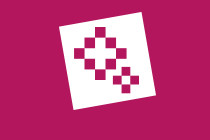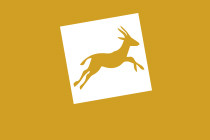Activities
In 2014, vistitors could make their festival experience even more exciting by taking part in the UAE’s history and culture themselves. Every Festival area had opportunities for hands-on fun.
Activities and demonstrations were occurring constantly throughout the festival, during the opening hours of 4pm and 11pm, and did not require registration.
ABU DHABI ISLAND AREA
Archaeological dig
Visitors could inspire their children with fun, hands-on archaeology dig. Which clues to the UAE’s rich heritage did they find?
Artefact handling
People could visit the artefact handling stations and touch a piece of history. In these fun interactive sessions for children and families, they had the opportunity to explore some objects from the UAE’s history and find out what stories they had to tell.
Horse-riding
Cherished for their grace and strength, the Arabian horse symbolises the beauty and purity of the Arabian desert. Vistors could meet the Arabian horses at the Festival, or take a ride and experience their power and splendour first-hand.
Traditional Games
Visitors could watch and learn traditional games to find out how children used to play in our deserts, oases and towns. Sticks, hoops and traditional clapping games were all they needed for entertainment.
Sadu
Visitors could watch how Sadu, a traditional form of weaving, is created. It is used to produce furnishings and decorative accessories for camels and horses.
Henna
People could visit the festival’s henna artists to get the traditional Emirati patterns. A truly unique reminder of the festival, a beautiful skin decoration and a memorable experience.
Dukhoun
Visitors could see how traditional scent or incense is prepared.
Wedding House (Beit Al Zehba)
Visitors could take part in this special, joyful and celebratory occasion as the men and women of Abu Dhabi Island prepared for a wedding. They could see the bride’s traditional preparations for her special day, with singing, dancing, music and beautiful clothes.
DESERT AREA
Hatheera
Visitors could see how traditional Arabic coffee is prepared in a traditional setting called Hatheera.
Butter Making
Visitors could see butter made the traditional way.
Traditional Food Tasting
Visitors could watch traditional Emirati dishes being prepared and could taste the delicious local cuisines.
Al Yowla
Visitors could watch the grace and power of the UAE’s traditional dance, as skilled musicians and dancers put on an exciting performance.
Bedouin Etiquette
Visitors could learn about Bedouin etiquette first-hand from the experts of the desert area.
Saddle Making
Camel saddles are traditionally made from wool and date palm fibre. Visitors could watch the skilled men of the desert make camel saddles and see a piece of history played out in front of them with this craft that was passed down from father to son.
Houbara Pen
An animal pen housed the now-endangered Houbara birds, giving visitors the opportunity to learn about the UAE’s conservation efforts to save the species from extinction. This was presented by the Environment Agency Abu Dhabi.
Saluki Dogs
Saluki dogs have been a part of Bedouin life for over 7,000 years. Visitors could learn about their important place in UAE culture.
Falconry
Visitors could see the most prized birds of the UAE’s desert in action, and watch stunning falconry displays.
Camel Milking
Camel milk is prized for its high nutritional values. Visitors could learn how to milk a camel, one of the traditional desert life skills.
Camel Riding
The UAE’s camels have long been cherished for their beauty and their endurance. Visitors could ride one of the desert’s most iconic creatures.
MARINE
Shasha Building
Traditional fishing boats are made from completely natural materials, just using the by-products date palm. Visitors could watch these skilled craftsmen at work and see marine life the way it used to be.
Paddle Making
Visitors could see how the paddles for shasha boats are made.
Sail Making
Our marine dwellers were expert craftsmen as well as skilled fishermen, making sails and fishing nets by hand before going to the seas in search of fish for trade. Visitors could watch sails being hand stitched, keeping this important tradition alive.
Dhow Building
Traditional dhows have long graced our waters. Visitors could see how these beautiful, hand crafted vessels are made, and had a glimpse of Abu Dhabi’s long ship building past.
Fishnet Making
Keeping our history and heritage alive, visitors could watch skilled fishermen weave fishing nets.
Al Gargour (Fish Trap Making)
Visitors could see how this traditional apparatus for catching fish is made.
Fish Salting
Visitors could watch our fishermen salt fish, an ancient method of preservation that brought the sights and smells of our ports and coasts to life.
Oyster Opening
Visitors could learn how to open a pearl oyster. Some oysters were one of the special ones that contained a genuine pearl.
Pearling Exhibition
Visitors could walk through a pearling exhibition to learn surprising facts about this historic industry and see relics of this important practise up close.
OASIS
Healing Garden and Children’s Gardening Club
Visitors could walk among desert plants of the UAE, and learn about their history, significance, and medicinal properties in ointments and herbal remedies. The Gardening Club section was for children to learn the history of different seeds and how to plant them in small pots, which they could then home with directions on how to grow it and look after it.
Khoos (Palm Weaving)
Every part of the date palm was used in the resourceful and frugal oases. Visitors could watch skilled craftswomen create beautiful items for home accessories from the leaves of this special tree.
Tree Climbing (Al Khallab)
The iconic date palm is symbolic of the bounty of the oasis in the austerity of the desert. Visitors could see this special tree climbed with just a rope harness.
Rope Making
The date palm is used to create a huge variety of building and craft materials. Visitors could watch the skilled men of the oasis roll date palm fibres to create ropes.
Dates
Visitors could learn more about dates, which have brought nutrition and sustenance to the men and women of the UAE for centuries, prepared the traditional way.
Goats
Goats provided the people of the desert with wool, milk and yoghurt. A number of goats were available for children to learn more about them.
Hawksbills Turtles
Visitors could see these critically endangered sea turtles and learn more about the conservation efforts, complements of The Environment Agency – Abu Dhabi.
Al Ain Zoo – Bird Show
Al Ain Zoo presented a show that included indigenous birds.







